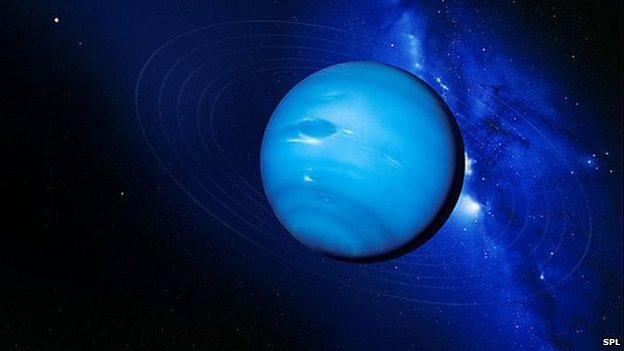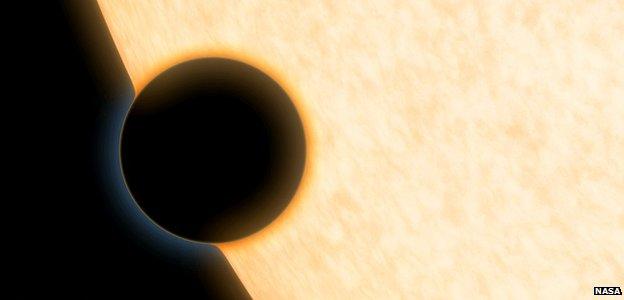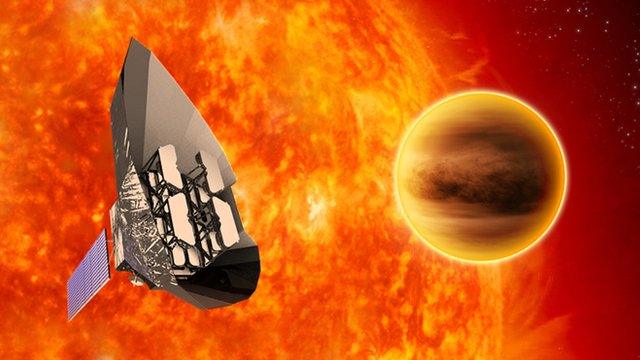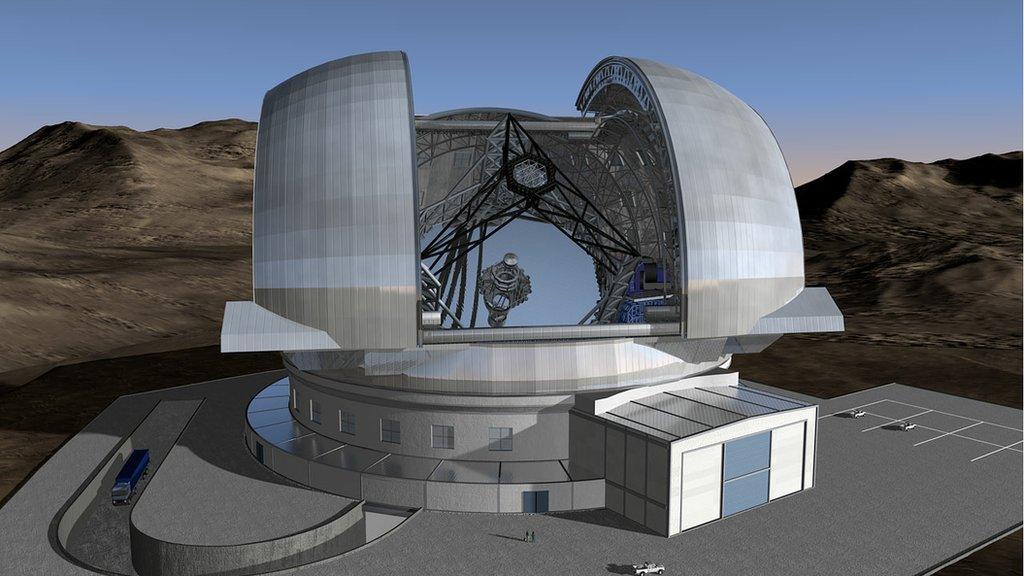Clear skies reveal water on distant Neptune-sized planet
- Published

Artwork: The exoplanet HAT-P-11b is four times the size of Earth, or about the same size as Neptune
A cloud-free atmosphere has allowed scientists to pick out signs of water vapour on a distant planet the size of Neptune: the smallest "exoplanet" ever to reveal its chemical composition.
Previously, only larger, Jupiter-like giants have been studied in this way.
Working with three space telescopes, astronomers deduced the presence of water by measuring the colours of light the planet absorbed when it passed in front of its star.
The find appears in the journal Nature, external.
It was made by a team of researchers led from the University of Maryland, US.
The planet, designated HAT P-11b, orbits a sun in the constellation Cygnus some 124 light-years - about a quadrillion kilometres - from Earth. It is roughly four times the width of our home world.
The scientists studied the planet's atmosphere with the aid of the US space agency's Hubble, Spitzer and Kepler telescopes.
Their observations were also greatly assisted by there being no clouds on HAT P-11b, which would otherwise have frustrated their attempts to probe its gaseous envelope.
The team determined that the far-off world's atmosphere contained about 90% hydrogen, but also significant quantities of water vapour as well.
Commenting on the findings, Dr Eliza Kempton, external from Grinnell College, Iowa, said the Maryland group had taken another important step in the study of exoplanets - planets beyond our Solar System.
"Astronomers have detected water vapour in the atmospheres of larger planets - planets that are closer in size to Jupiter. But you can imagine that eventually we want to be able to detect molecules in the atmospheres of even smaller planets.
"We'd like to be able to look at an Earth-sized planet and measure its gaseous composition. So this is a step on the ladder; we're stepping down the ladder towards smaller and smaller planets," she told this week's Science In Action programme on the BBC World Service.
Water has obvious implications for life, although HAT P-11b is too close to its star - and therefore too hot - to be habitable.
But in the future study of Earth-sized exoplanets, the presence of water will be an important consideration as scientists search for biology elsewhere in our galaxy.

Artwork: A planetary atmosphere's composition is revealed by the light it absorbs from the background star
- Published20 February 2014

- Published9 September 2013
- Published11 June 2012
